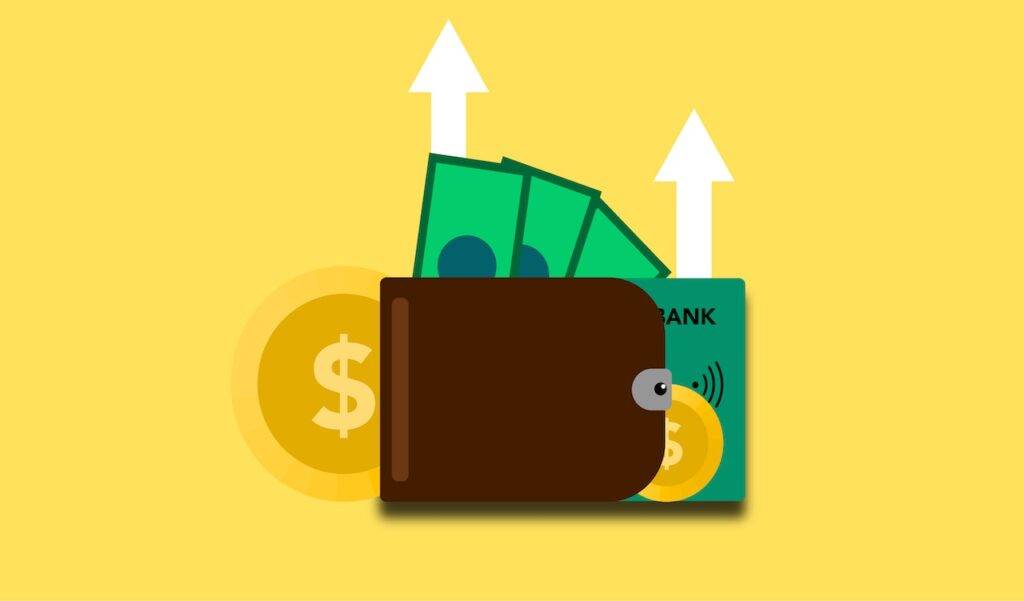The important number Amazon ACoS, which stands for an advertising cost of sale, helps Amazon sellers figure out how much advertising costs and how profitable a campaign is. In the cutthroat world of eCommerce, advertising is one of the quickest ways to boost sales. But to get the most out of an Amazon PPC campaign, you need to know how much advertising costs. You should decide early on if a campaign will make money or not. This is why you need to know about and keep an eye on Amazon’s ACoS.
In the quick guide we’re sharing today, we explain what ACoS means on Amazon, how to calculate it, and what you can do to improve it.
Let’s get started.
What is Amazon ACoS?
A special Amazon indicator called ACoS figures out how much you spend compared to how much you make. Your ability to tell if your campaigns are profitable or not depends on how well you understand Amazon ACoS, which is shown as a percentage.
How to Figure Out the ACoS in Amazon PPC
On Amazon, it’s easy to figure out ACoS. The formula below will show you how to do it:
ACoS = Ad Spend/Ad Revenue x 100
Here’s how you would figure out ACoS if, for example, you spent $60 on an Amazon PPC campaign and made a total of $200 from sales.
$60 / $200 X 100= 30%
Based on this result, the ad cost you 30 cents ($0.3) for every dollar it brought in.
It’s important to remember that ACoS doesn’t include things like the cost of making ads and Amazon fees. It only keeps track of what you spend on ads (the campaign budget you listed when setting up your ad on Amazon).
What is the difference between Amazon ROAS and ACoS?
ACoS is the opposite of ROAS. Pay-per-click advertising is also more likely to use ROAS (PPC).
ROAS tells you how much money you make from advertising for every dollar you spend on it. ACoS on Amazon, on the other hand, shows how much you spend for every dollar you earn.
Both metrics are important for figuring out how well an Amazon PPC campaign is doing. ROAS looks at how well your advertising spend is working, while ACoS looks at how profitable your business is.
So, to get a full picture of your Amazon campaign strategy as a whole, you should keep track of both metrics.
What’s a good Amazon ACoS for PPC?
When selling on Amazon, there are a lot of different ideas about what makes a good ACoS. ACoS is one of those metrics that depend on what your business goals are right now and what kind of seller you are.
Among these are business goals, the right way to structure a campaign, the product’s life cycle, profit margins, and so on. A lower ACoS means you spend less of your sales on Amazon, but how you define “low” will change from ASIN to ASIN.
If you sell clothes, cosmetics, or food on Amazon, you will have to pay more for first conversions to get repeat customers, while you will have to pay less for first conversions if you sell technical products or replacement parts.
As an Amazon seller or brand, you want to make money over time so you can grow your business. So, to figure out the target ACoS for each product, you need to be clear about the net profit margin you want after advertising costs.
With this information, you need to first choose the strategy and goals for each campaign. By making your goals clear and showing them to others, you will be better able to decide which products to include in your campaigns, how to structure them, and how to measure their success.
Some of the most common goals of advertising campaigns are:
- Putting out a new product and promoting it
- Getting rid of stock
- Getting good feedback
- Bringing in money
- Bringing attention to a brand
The ACoS percentage you feel comfortable with for different products or campaigns will depend on which of the above goals you choose.
What do Breakeven and Target ACoS mean?
Breakeven ACoS is the point at which the cost of advertising equals the profit margin. Breakeven ACoS is found by taking the sale price and subtracting all of the fees and costs of selling on Amazon. This gives you a net loss and net profit of $0.
Next, as the name suggests, your target ACoS is the ACoS you want to reach.
Once you know your breakeven ACoS and your target ACoS, you can decide if a certain ACoS is good or bad. If the ACoS is less than the product margin, your campaign is profitable, but you may not be hitting your target margin goal.
For example, you might be willing to have an ACoS higher than your margin to get a new product off the ground and get the system going. For existing products, on the other hand, you will likely be trying to make money and the ACoS will be well below your breakeven point.
Most of the time, a lower ACoS is linked to strategies like maximising profits, optimising SKUs that don’t sell as well, or selling items you know will sell even if they don’t have a lot of visibility.
A higher ACoS can help sellers who want to get more people to know about their products or brands, get rid of old stock or slow-selling items, or make their products more visible.
All in all, the business strategy behind each campaign will determine whether a certain ACoS is good or bad.
What Does It Mean for an Amazon ACoS to Be Average, Low, or High?

The best benchmark is the average ACoS.
Since the beginning of 2020 and through 2022, the average ACoS per user per day for Sponsored Product Ads on AiHekko has been 34.42%. This is a good point of reference and is right in the middle of a high and low ACoS.
In general, April is the best time for our users to advertise to make money, with the most sales and the lowest ACoS (20%).
Low ACoS means a lot of money.
Most sellers think that you should try to get your Amazon ACoS down. But it depends on how you sell a product and how much money you make from it. I think an ACoS of 15–25% is low and a good place to start if you want a low ACoS.
But you have probably been told over and over again to “LOWER YOUR ACoS!” Yes, lowering your Amazon ACoS can be helpful, but only if it fits with what you want to do.
Setting a low ACoS is also a good way to:
- Making the most money possible
- Selling a product that doesn’t sell well
- You have a product that doesn’t need to be seen by a lot of people.
Example: Say that your TACoS is 10% and that you make $200 in sales. You spent $20 on ads and made $180 back (before the cost of goods).
Putting less money into ads can also be bad. Having a small budget for ads makes it harder for people to see the product. In Amazon PPC, you bid on keywords. If you put in a low bid for a keyword that is very popular, you might lose the auction for it.
High ACoS means that people can see it.
The best way to explain a high ACoS is with the old saying, “You have to spend money to make money.”
Great Amazon sellers use different TACoS for different kinds of products to sell as many as they can. Having a low ACoS is great for making money, but having a high ACoS can help you get more attention, dominate a niche, and make more money in the long run.
Those who should set a high ACoS are sellers who:
- Are trying to get rid of a product that doesn’t sell well.
- Trying to sell every last one of something.
- Trying to make more people aware of the brand
- Dominate a niche
Want your product to be seen a lot?
A high ACoS is like when advertisers buy a big spot in Times Square or make a Super Bowl ad. The advertiser is spending a lot of money, but there is a good chance that it will pay off.
Let’s say that your TACoS is 40% and you make 1,000 sales. You put in $400 and made $600. (before the cost of goods).
If you haven’t seen it yet, we wrote the ultimate guide to Amazon PPC, which goes into more detail about how ACoS affects your campaigns.
Top five ways to lower your Amazon ACoS
The best way to lower your ACoS is to stop wasting money on ads and use the money you save to put more money into what’s working.
Each strategy we describe below is based on these rules: stop what isn’t working, improve what is working, and try new things if you have the money.
1. Choosing the Keywords
Try running a search term report for your Sponsored Products to cut down on the money you waste on ads. This report can help you figure out if your recent campaigns were successful. If your recent advertising campaigns aren’t meeting your goals, you should spend less on this kind of advertising in the future.
You can use the same search term report to find search queries that lead to profit and conversion. Check how much each keyword costs per click.
After looking over the report, choose the high-performing keywords you want to focus on. If you can figure out which search terms lead to the most sales, your ACoS will go up, and you won’t have to waste money on keywords that don’t lead to sales.
But keep in mind that you should look at these reports often. Many things can change how the market works. We recommend using these reports with AI-based optimization software to help you make changes to keyword bidding, find negative keywords, and figure out how much money to spend on ads.
2. Amazon Campaign Comparisons
Try running a campaign comparison if you want to find the best keywords for a certain product. You can choose between automatic and manual campaigns on Amazon.
Automatic: Sellers can choose their budget, and Amazon will automatically find keywords that match their product’s category, related products, and keywords in the product’s description.
Manual: Sellers choose the keywords they want to bid on and tell the system where they want their ad money to go by choosing a broad match, phrase match, or exact keywords.
One strategy that sellers use, especially for new products, is to run both campaigns at the same time and let Amazon find profitable search terms that drive conversions. After both campaigns are over, you can look at them side by side to see which words worked well and add them to your manual campaigns.
Automated campaigns should be used to improve your manual campaigns. Don’t just keep running automated campaigns without taking any additional steps or improving them.
3. Improve the way Amazon lists products

How well your advertising works depends on how well you list your products. When you spend money on advertising, you want to make sure that things like your image or listing title don’t stop buyers from clicking on your product.
The first thing a buyer sees about a product is its title and image, so you need to make sure they are good.
Here are a few things you can do to make sure your product title doesn’t hurt your ACoS:
- Make sure your title is clear. Instead of trying to fit as many buzzwords as possible, focus on important information for your customer, like specs or model numbers.
- Try out different pictures or compare the pictures of your products to those of your competitors to make sure they appeal to your target customers.
- Avoid marketing terms like “free shipping.”
- Check your reviews and frequently asked questions to see if you can make your listing clear to answer these questions or concerns.
4. Do research on your competitors
We can guarantee that you aren’t the only seller trying to lower their ACoS and improve their listings. Your competitors are doing the same thing. It is recommended that you keep an eye on your competitors by:
- Compare what you’ve learned. Look at the words they are bidding on, the titles of the products, and the pictures, and see how they compare to yours.
- Look at reviews. Use the reviews to find out where your competitors are falling short and where you can make up for them.
- Keep your target audience in mind. Reaching the same people as your competitors? Is there something you can do to get noticed? The goal of this research is to find out what your competitors are doing well and where they are falling short to stand out and do well.
5. Ratings and reviews on Amazon
Once your ads reach the people you want to see them, you want them to lead to sales. The reviews and ratings are a big reason why people might not decide to buy from you.
We think you should focus on advertising Amazon products with 3.5 stars or more. This will increase your conversion rate, which will help you lower your ACoS. If any of your products don’t have a score of 3.5 or higher, you can still think about running an ad campaign for them, but keep in mind that it may affect your ACoS for that campaign.
Not every time a higher ACoS is bad. A high ACoS can help sellers get more exposure, build brand recognition, or sell off old stock.
Best Practices
Total ACoS is a better way to show how much you are willing to spend on advertising for each sale than ACoS because it takes Amazon’s “flywheel effect” into account. Because of this, Total ACoS goals are often based on the Total ACoS you need to make money.
If you want to make sure that your whole account or portfolio of products has a certain Total ACoS, you should group these goals. If you need a different Total ACoS for each goal, it might be better to put each goal in its strategy.
Choose a target for the strategy’s Total ACoS that is within 4% of the overall Total ACoS for the goals in that strategy when setting the target.
When you see a Recommendation to increase or decrease the target ACoS for a goal, think about your strategy for that goal or segment before accepting or rejecting the Recommendation.


